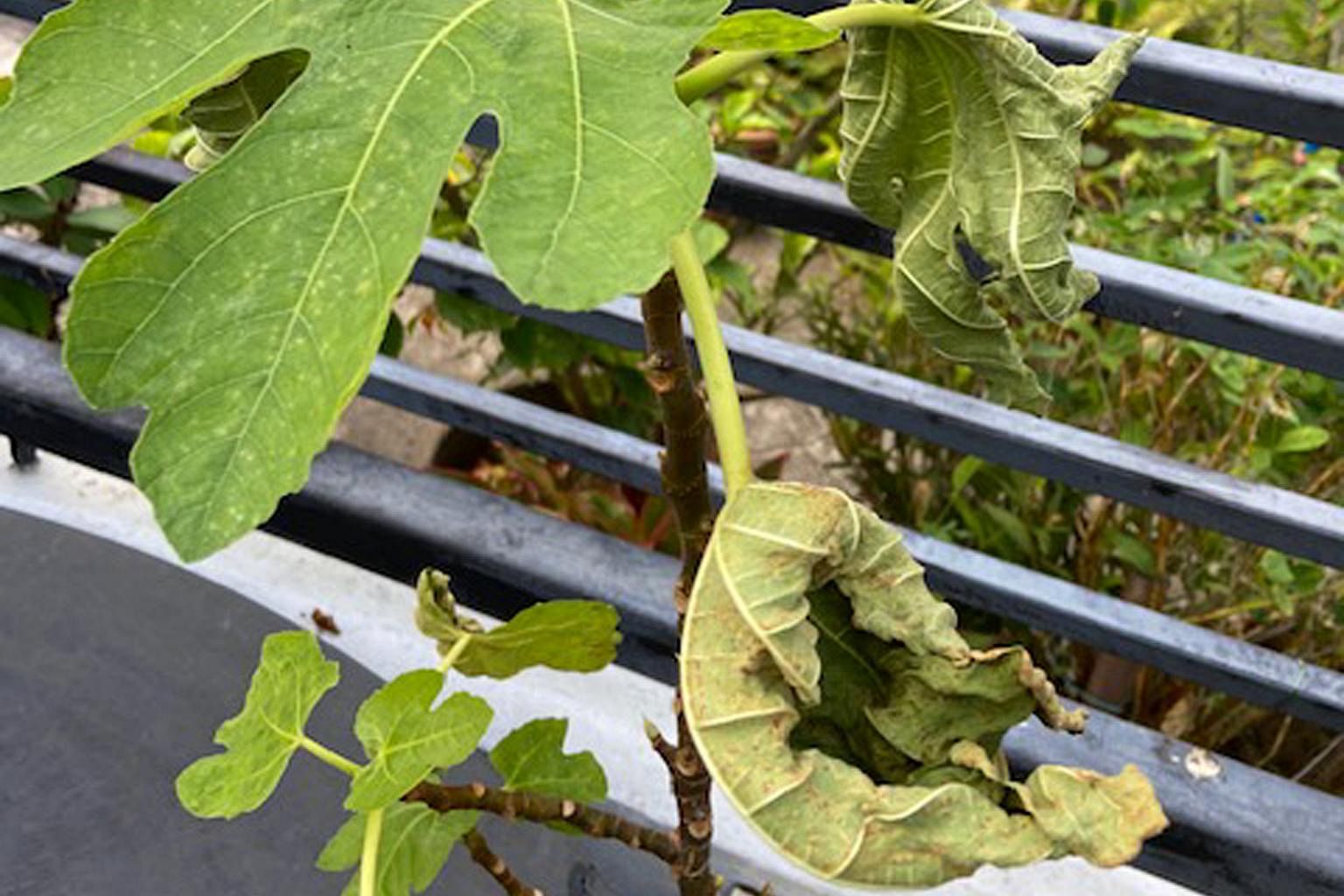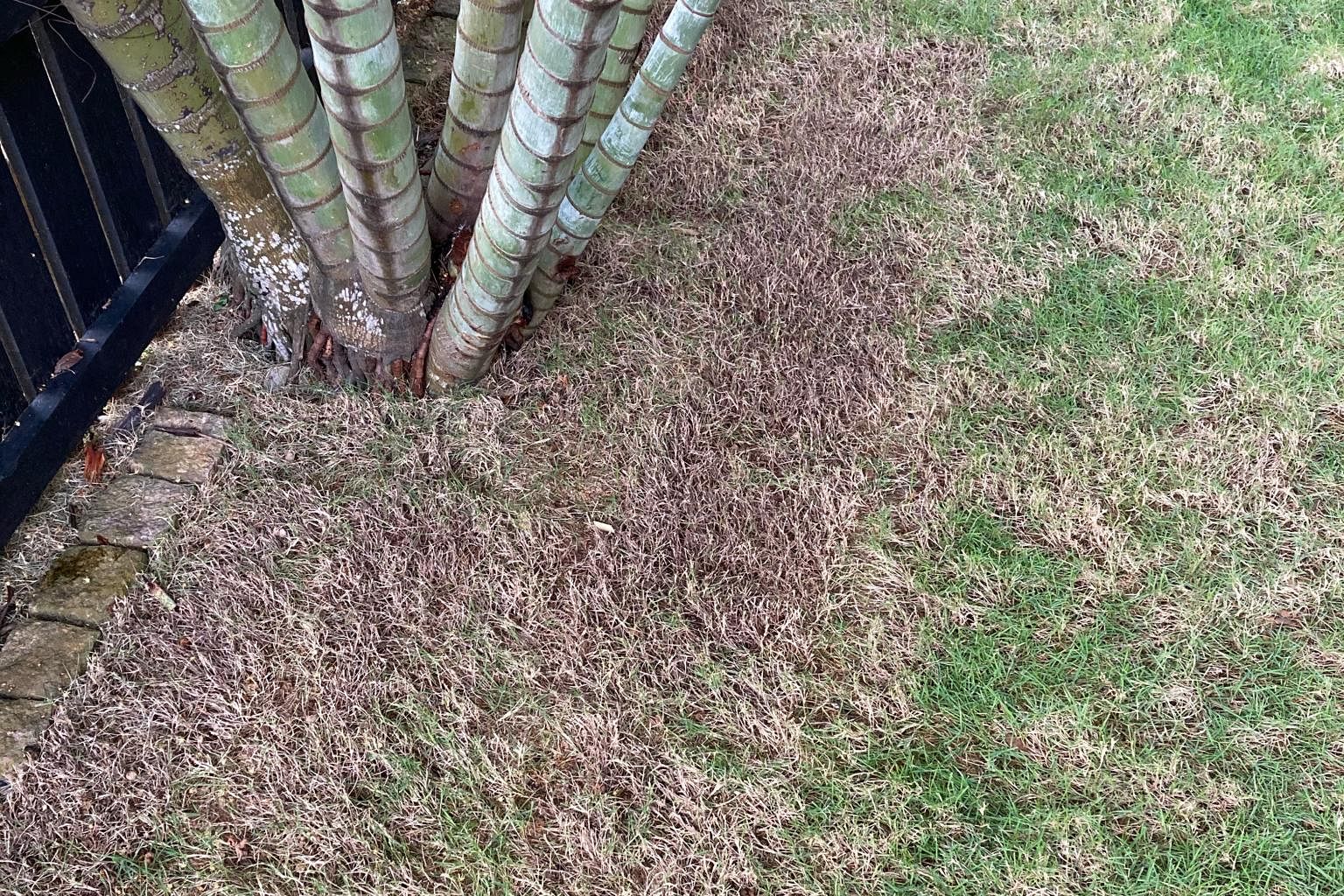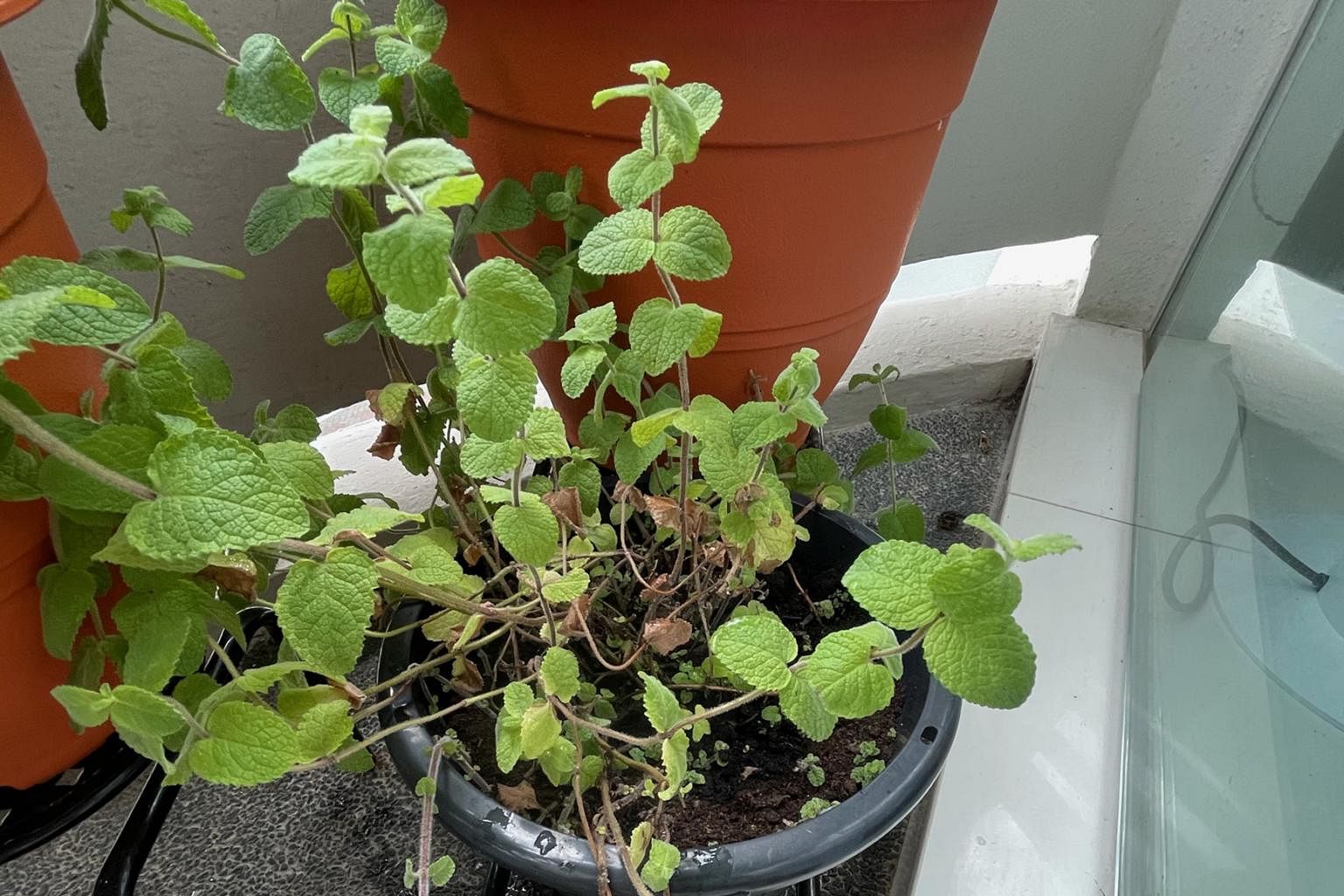Prune Coleus to encourage bushier growth
What is the name of this plant? How do I take care of it?
Foo Chee Kwang
The plant is commonly known as the Coleus and its botanical name is Coleus scutellarioides. There are many cultivars with varied leaf shapes, sizes and colours.
For best results, grow this plant under direct sunlight, although some cultivars do better under filtered sunlight. They are prone to rot and best grown using well-draining potting mixes.
Your plant appears leggy and you can prune it to promote bushier growth. Cut the stem at the portion that is somewhat still green. Do not cut too low along the stem and avoid the woody brown portions.
The tip cuttings can be rooted to get new plants. Move the plant to a larger pot when necessary as it grows quickly and the roots fill the container.
Wilting Fig plant may have root issues

My fig plant, although not fruiting, was doing well until recently. The leaves are now wilting and dropping. What is wrong? And how do I get it to fruit?
Goh Bee Wan
The wilting and drying up of the leaves could be due to root issues. Was the plant allowed to dry out and wilt previously? If a plant dries out totally, the roots can become damaged and unable to uptake water. As a result, leaf tissues that have been denied of water earlier will wilt, dry and die away.
Another cause could be wet feet.
Fig plants prefer to grow in a porous and well-draining mix. Constant wet feet can cause the roots to die and, as a result, the plant is not able to uptake water, leading to almost the same symptoms you will see in a plant that has dried out.
Fig plants are best grown in a sunny but sheltered location to prevent damage caused by excessive rainfall.
You have to restore your plant to good health before expecting it to fruit. Grow it in a sunny location for best results.
A fig plant grown in a shaded area will be susceptible to disease. The frequency and fruiting season also largely depend on the cultivar of the fig plant.
Lack of light, drainage may have caused turf decline

The carpet grass I put in my patio a few months ago is thinning and turning black (right). The issue is occurring particularly underneath a palm tree that is also growing there. Could this be due to reduced light as the grass is partially shaded by the palm; a lack of nutrients; a fungus; overwatering or underwatering; or that the grass is too long hence the grass close to the soil is rotting?
Charles Taylor
The poor growth of your turf could be due to several reasons.
First, ensure there is sufficient direct sunlight and good drainage - these are vital for healthy growth. If the palm casts too much shade, it may be a good idea to mulch the base of the palm for better growth rather than trying to establish a patch of turf underneath it.
Poor drainage due to compaction of the soil or a high water table that results during the wet season can drown the roots of the grass and cause them to rot and be prone to disease, subsequently leading to death of the grass plants. You may need to aerate the soil or adjust its level so excess water drains away.
Secondly, do you own a dog? Constant urination at the same site can cause the turf to die as well. You may want to ensure that you water down the urine whenever your pet relieves itself near the palm.
Apple Mint needs light to thrive

My Apple Mint plant seems to be dying. I had originally put it in a location with three to four hours of morning sun, then moved it to a slightly shadier area.
Angeline Cheng
The Apple Mint plant is a sun-loving plant and the lack of light, especially when there is a dense crown of leaves, can cause the leaves to die away.
Also, are the affected leaves and roots dying and rotting? If they are, it could be an indication that the roots are experiencing constant wet feet.
The moving of the plant from a sunny location to one that is more shaded can cause a moisture- retentive growing media to not dry out sufficiently. As a result, roots and lower leaves can become infected by disease, which causes them to rot and die.
You may want to take stem- cuttings and grow new plants from them. Do so in a more porous and well-draining mix and in a sunny location.
Plant a native species of southern Taiwan

I have had this tree for more than 25 years. What is its name and its origin? Can it survive replanting?
Victor Lim
The plant is a cultivar of a fig. Its botanical name is Ficus microcarpa and its cultivar name is called Green Island. It is also known by a number of common names such as Wax Fig, Panda Ficus and Dollar Ficus.
It is reported to be native to the coastal region of the Hengchun Peninsula in southern Taiwan.
Moving such a large specimen will require technical knowledge and skill. It is best to engage a certified arborist from a landscape company. He or she will assess the tree and implement the necessary steps and machinery to transplant it properly and ensure its survival.
Answers by Dr Wilson Wong, an NParks-certified practising horticulturist, parks manager and ISA-certified arborist. He is the founder of Green Culture Singapore and an adjunct assistant professor (Food Science & Technology) at the National University of Singapore.

